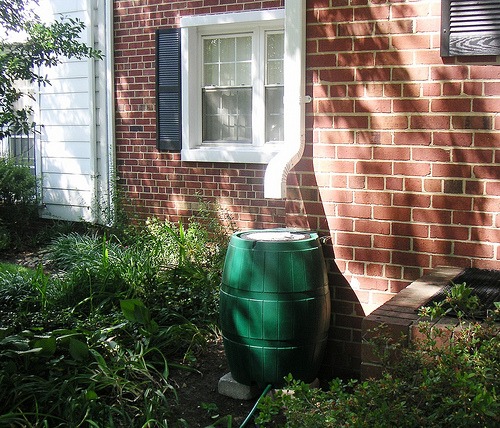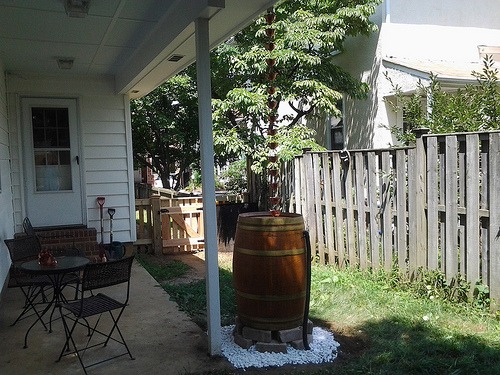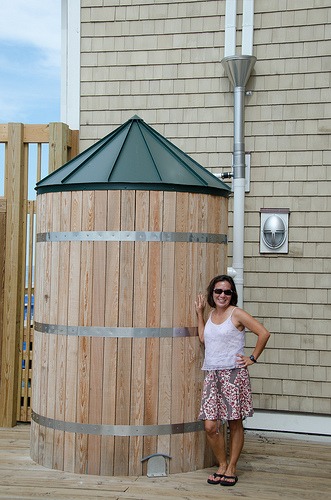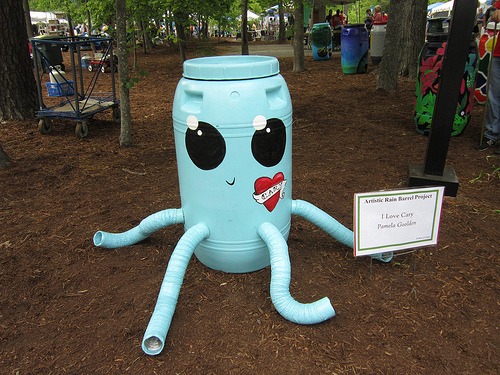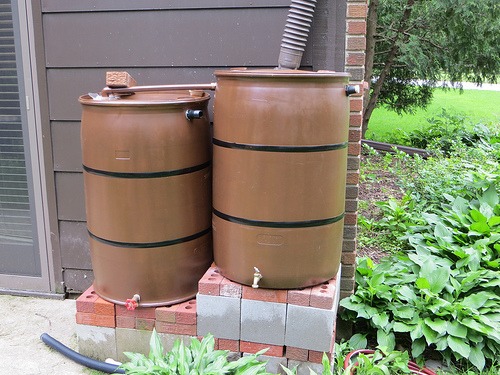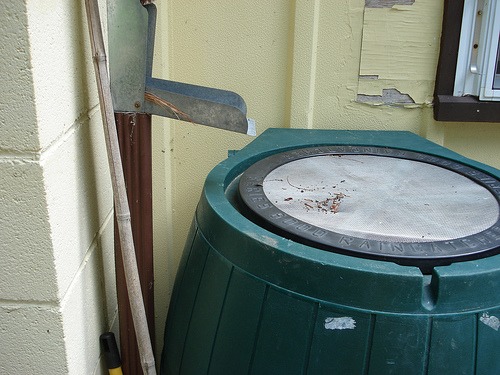How to Harvest Rainwater Using Rain Barrels
As San Diego’s water supply (from the Colorado River and the Sacramento Bay Delta) is subject to drought and other uncertainties, part of the County’s water conservation plan now encourages households to harvest rainwater. It’s a technique dating as far back as the Greek and Roman empires that is experiencing a resurgence due to convenience, ease of rain barrel installation and overall awareness about the value of water.
According to the County of San Diego, approximately 600 gallons of rainwater can be harvested from just one inch of rain falling on a 1,000 square foot roof. So, even though it doesn’t rain much in San Diego, households can actually still save money on water bills while preserving the environment.
Note that state and local regulations prohibit using rainwater as drinking water.
Don’t even think about it.
The Benefits of Rainwater Harvesting
In basic terms, rainwater harvesting is the capture, diversion and storage of water not intended for drinking. It has a long list of benefits.
— Water is re-purposed in our yards or can even be used to wash our cars.
— It prevents excess water from (literally) flooding our storm drains, picking up grease, dirt and other toxins off the ground along the way. The County estimates that over 50% of storm-water runs over toxins prior to entering our oceans.
— Rainwater harvesting saves energy by reducing demand on the County’s drinking water supply.
— Rainwater is free.
Rain Gutters Facilitate Collection
In theory, it’s possible to harvest rainwater from street gutters and other areas around the home but the County (both the County of San Diego and the City of San Diego have a ton of information online) is focused on re-purposing water captured by rain gutters. Frankly, as you’re about to learn, this is by far the easiest and most effective method.
Rain gutters help direct water off of a roof and into the storm drains, preventing severe puddling, saturation and erosion around the home. Even though it doesn’t rain that often in Southern California, they are a must-have.
Using rain gutters, some people capture rainwater in rain barrels while others just redirect rainwater into landscaped areas. The benefit to the latter is that the water soaks back into the ground, indirectly recharging natural sources of groundwater while preventing excess run-off. Think about how you’ll use rainwater prior to installing any system, as there are a variety to choose from and you may need professional help.
Rain chains are another decorative and practical way to guide rainwater out of rain gutters and into a rain barrel.
Most rain chains are made from copper, however, the City of San Diego discourages the use of copper in both rain chains and rain gutters. Copper is a popular choice for luxury homes for it’s metal finish and ability to patina, but dissolved copper is a known water pollutant.
Calculating Need
The most environmentally-friendly rainwater capture system is one that matches landscape water requirements to amount of water captured with roof run-off. How do you calculate the need? The City of San Diego advises using this formula which is based on a typical San Diego storm producing 0.6 inches of rain:
Runoff (in gallons) = 0.25 x Roof Area (in square feet)
The pitch of the roof isn’t taken into consideration so measure from eave to eave and front to back. As we all know, some storms are larger while others are smaller. And, occasionally, it can really pour cats and dogs. A contractor can guide you specifically, but only take into consideration the roof area that will drain into a gutter leading to a rain barrel or other capture if just installing a barrel or two.
Next, gardening enthusiasts may wish to estimate how much water the yard actually needs. The City of San Diego maintains a list of water needs in gallons per square foot per month for various plants from native plants to synthetic turf. If you measured your yard and multiplied by need, you could figure out exactly how much rain is needed. Aiming to capture water necessary for the entire yard is possible, but will probably need professional help. A rainwater barrel that holds more than 5,000 gallons requires a permit.
Rain Barrels for the Enthusiast
In reality, most of us are probably just going to install a barrel or two to scratch an environmentally-friendly itch, water a good chunk of the yard, and perhaps teach the kids about water conservation.
Some people make it as simple as using a trash can to capture rain from a downspout. There’s no fancy math or equipment—just a will to collect some water. The United States Environmental Protection Agency has online instructions regarding how to make your own rain barrel using inexpensive off-the-shelf items.
And, really, there’s no reason why a rain barrel has to be boring. Keep the kids interested by giving it a makeover.
Rain barrels are easy to buy at gardening centers or hardware stores and, of course, they vary from simple to advanced systems. Before purchasing, consider how you’ll get the water out of the barrel. Most have easy-to-use spigots while larger barrels have pumps or hose access.
Installation Considerations
It’s important to install a rain barrel on a flat surface to make sure water evacuates properly, because tipping a water barrel attached to a downspout won’t be possible.
Shade will help prevent algae from growing so consider wrapping the barrel in mesh or placing large plants around the barrel.
Consider elevating the rain barrel on a platform (as seen above) in order to have enough room to place a watering can or similar under the spigot.
In the event of a major rain, figure out where the rain barrel overflow will divert to (is there a drain nearby or landscape that can take excess water?) and plan accordingly.
Consider a rain barrel with a filter to keep insects and debris out of the rainwater.
Rain Barrel Maintenance
The most important thing to do maintenance-wise is to keep rain gutters free from debris prior to and during the rainy season. The frequency probably depends on whether or not there are trees nearby.
Depending on where you live, mosquitoes can be a major issue as they breed in standing water. Make sure to buy a screened rain barrel and use tight connections from the rain gutter downspout to the barrel. The County suggests that a larvicide tablet is OK to use as it doesn’t not harm people animals or plants.
Be sure to wash the rain barrel out and monitor for algae growth.
Save Money with Rebates
At the time of this writing, the City of San Diego offers rebates for rain barrel installation as long as funds are available. Check to see if your system qualifies. The current rebate is $1 for every gallon, up to 400 gallons.
Visit the County of San Diego’s section on rainwater harvesting for more information as we’ve just scratched the surface regarding this ancient, yet still relevant, technique. There is also a list of local rain barrel retailers.
Your Turn…
Do you reuse rainwater? Share with us how you do it in the comments below…
Photo credit: green rain barrel, Flickr/Arlington County; rain chain, Flickr/Ken-Mayer; big rain barrel, Flickr/TimothyJ; octopus rain barrel, Flickr/moonlightbulb; brown rain barrels, Flickr/regan76; rain barrel filter, Flickr/fireballsedai
